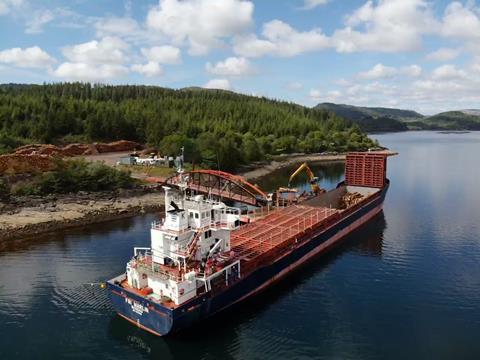Scottish timber hauliers are to benefit from ?800,000 in funds to improve fragile rural roads, create passing places and …
Nine projects will be funded by Scottish Forestry as part of the Strategic Timber Transport Fund. These include 17 passing places being constructed in Dumfries and Galloway on a single track road (C102a) which is used by timber lorries; a new route at Moss of Cree, which will provide safe access and transport of timber at Lamachan and Carty Bridge on the C15W public road; and upgrading of the B6357 to improve the capacity of the road which is forecast to carry more than 800,000 tonnes of timber over the next decade. A further GBP1.2m has already been committed to funding ongoing initiatives including the TimberLINK coastal shipping project, a three-year electric timber lorry trial and a network of regional timber transport officers across Scotland.
"Scotland's forests and woodlands are a powerhouse in providing economic growth for the country," said Mairi Gougeon, rural affairs secretary. "Around GBP1 billion is currently generated every year and the forest industries support 25,000 jobs, many of which are in rural parts of Scotland. "With around 7 million tonnes of timber being produced each year by our forests, I'm keen to support the sector get their timber to market safely and reduce any disruption to communities.
"I'm also keen to promote ways which can help decarbonise the way timber is moved and look for new solutions in transporting timber in a way that lessens the impacts on the environment." The TimberLINK project operates around Argyll and Ayrshire using ships instead of timber lorries to move around 100,000 tonnes of timber to wood processors. The three-year electric timber lorry trial is nearing its first year and is exploring how well two lorries can handle the logistics of moving timber around in the south of Scotland and Highlands.
Dr William Clark, Scottish Forestry's forest transport and innovation advisor added: "The Strategic Timber Transport Scheme has transcended its original aims.
"Whilst still delivering its core benefits of reducing the impacts of timber haulage on Scotland's communities, it has also become a focal point for innovation and collaboration across a diverse range of stakeholders.
"Local authorities, forest industry businesses, communities, various agencies and government are all working together on this towards the common goal of a sustainable future."
